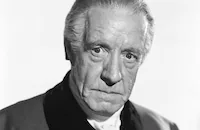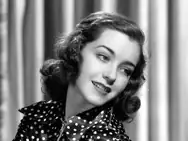The Hardys Ride High

Brief Synopsis
Cast & Crew
George B. Seitz
Lewis Stone
Mickey Rooney
Cecilia Parker
Fay Holden
Ann Rutherford
Film Details
Technical Specs

Synopsis
The Hardys' family life in the small town of Carvel is drastically altered when Judge Hardy is informed that he is the heir apparent to a two million dollar fortune that has come down from his ancestor Colonel Leeds, a soldier who fought in the War of 1812. The entire family packs up and moves to Detroit, where they are ensconced in a palatial mansion as they await the final decision of the courts concerning their inheritance. In Detroit, only Judge and Mrs. Hardy maintain a semblance of sanity, as Andy falls under the influence of Philip Westcott, the profligate foster son of the late millionaire Leeds. Plotting to overturn the Hardys' claim on his foster father's estate, Philip becomes friendly with Andy, introducing him to nightclubs and fortune hunting chorus girls. As Andy envisions himself a millionaire playboy, his sister Marian dreams of costly clothes and social prestige, and Aunt Milly transforms herself from a prim spinster to a social butterfly in hopes of ensnaring Mr. Archer, a man she met on the plane. Even the Judge's integrity is tested when he discovers evidence that proves his great grandfather Leeds was an adopted son, and therefore he is not a rightful heir. Returning to Carvel with his family, the Judge comes to his senses and renounces his claim on the fortune, much to the relief of Andy, who, terrified by the flirtations of a chorus girl, returns to his girl friend Polly. Similiarly, Marian realizes that expensive clothes will not bring her happiness, while Aunt Milly finds companionship with Mr. Davis, the town pharmacist. Thus, guided by the Judge's homespun philosophy, the Hardys' relinquish their social prestige to become just ordinary folks.

Director
George B. Seitz
Cast

Lewis Stone

Mickey Rooney

Cecilia Parker

Fay Holden

Ann Rutherford

Sara Haden

Virginia Grey

Minor Watson
John King
John T. Murray

Halliwell Hobbes

George Irving
Aileen Pringle

Marsha Hunt
Donald Briggs
William Orr
Truman Bradley
Erville Alderson

Hale Hamilton
Don Castle
Frances Mcinerney
Mary Tanner
Truman Bradley

Ann Morriss
Phil Tead
Alex Pollard
Crew
Martha Acker
Tom Andre
Tom Biggart
Bill Cogswell
J. J. Cohn
John Cooney
Sam Day
Herbert Fischer
Jack Franzon
Myrtle Gallegher
Inez Gay
Cedric Gibbons
Jim Halliday
Russ Haverick
Eddie Imazu
Agnes Christine Johnston
Ben Lewis
William Ludwig
John M. Nickolaus Jr.
Lou Ostrow
Dick Paxton
Arthur Rose
Charles Ryan
Douglas Shearer
Ralph Shugart
David Snell
Frankie Tanner
Lee Trainor
Kay Van Riper
Don Vanni
Neil Wakeman
Lester White
Edwin B. Willis

Film Details
Technical Specs

Articles
The Hardys Ride High
The film was one in a long line of "B" pictures based on characters created by Aurania Rouverol, which had spawned the Andy Hardy series. The popularity had Mickey Rooney surpassing Shirley Temple as the nation's number one box-office attraction in 1939. MGM, wanting to cash in and put Rooney in film after film, bounced him from "A" pictures like Boys' Town (1938) to Bs like the Hardy series.
With the working title The Hardys at Home, The Hardys Ride High went into production on January 13, 1939, with retakes shot in February. Anne Nagel was originally cast in the role of Susan Bowen (which later went to Marsha Hunt). The director of the series was George Seitz, who Rooney praised in his autobiography. "Naturally, when you are playing a part, you are, also, someone else. But you become that someone in your own way. How do you cry on camera? You get into the story, you react to the story, you learn to listen. That's what I was doing in my Andy Hardy pictures. Creating Andy Hardy. Becoming Andy Hardy. Being Andy Hardy. And I could do this in my own way because I had a director on the Hardy pictures who encouraged my individuality - partly because he was such an individual himself. His name was George B. Seitz....Mr. [Louis B.] Mayer hired him in 1933 and in seven years there he did forty-two films. I think he was able to work fast because he had the kind of overview of his films that allowed him to cut scenes in his head. (Otto Preminger had the same kind of film genius.) That's one of the things I admired about him. I have another reason for thinking of him as a great director, one of the best I ever had: he didn't take himself too seriously. He didn't try to play the tyrant. He let things happen....And so, bang, bang, bang, under Seitz's direction, we did three Hardys in a row, each bigger at the box office than the one before, each featuring this cocky (but always ready to be humble) kid who didn't mind listening to his dad, the judge. Those father-and-son chats became fixtures in every Hardy film. People liked them. There was something refreshing about a kid like me being so candid with his dad. [...] The Hardy pictures were great box office - and getting greater. We grossed $3.7 million for Hardy numbers two three, and four, on an outlay of a half million. Was Mr. Mayer happy? He was delirious."
Frank Nugent wrote in his film review for The New York Times, "[W]here the Hardys ride, you must know, in the inconceivable circumstance that you don't know already, there rides Mickey Rooney, the Lord help us all. That gnomish prodigy, that half-human, half-goblin man-child, who is as old in cinema ways as Wallace Beery and twice as cute, inexorably dominates the Hardy series, as Pearl White used to dominate The Perils of Pauline. [The plot is] an excuse for a cinematic solo by Master Rooney. Mickey in a top hat, trying with the most successful non-success to be a man of the world; Mickey turning down cigarettes and strong drink, fleeing madly from the blandishments of a chorus girl; Mickey being a little man at last and admitting with a catch in his voice that honesty is better than millions...These are the high spots of The Hardys Ride High, and if they leave you in low spirits, you must be pretty low yourself. A veritable beast in human form."
Producer: Lou L. Ostrow (uncredited)
Director: George B. Seitz
Screenplay: Agnes Christine Johnston, William Ludwig, Kay Van Riper; Aurania Rouverol (characters)
Cinematography: Lester White; John F. Seitz (uncredited)
Art Direction: Cedric Gibbons
Music: David Snell
Film Editing: Ben Lewis
Cast: Mickey Rooney (Andrew 'Andy' Hardy), Lewis Stone (Judge James K. Hardy), Fay Holden (Mrs. Emily Hardy), Cecilia Parker (Marian Hardy), Ann Rutherford (Polly Benedict), Sara Haden (Mildred 'Aunt Milly' Forrest), Virginia Grey (Consuela MacNish), Minor Watson (Mr. Terry B. Archer), John King (Philip 'Phil' Westcott), John T. Murray (Don Davis, the Druggist), George Irving (Mr. Jonas Bronell), Halliwell Hobbes (Dobbs, the Butler), Aileen Pringle (Miss Booth, Dress Saleslady), Marsha Hunt (Susan Bowen), Donald Briggs (Caleb Bowen), William Orr (Dick Bannersly).
BW-81m. Closed Captioning.
by Lorraine LoBianco
SOURCES:
The AFI Catalog of Feature Films
Beck, Sanderson The Movie Mirrors Index
Nugent, Frank "The Hardys Ride High at the Capitol", The New York Times 14 April 39
Rooney, Mickey Life's Too Short

The Hardys Ride High
Virginia Grey (1917-2004)
She was was born in Los Angeles on March 22, 1917, and was exposed to the film industry at a very young age. Her father, Ray Grey, was a Keystone Cop and acted in several other of Mack Sennett's comedies with the likes of Mabel Normand, Dorothy Gish and Ben Turpin. When her father died when she was still a child, Virginia's mother encouraged her to join the acting game and audition for the role of Eva for Uncle Tom's Cabin, a big budget picture for Universal Studios in the day. She won the role, and acted in a few more pictures at the studio: The Michigan Kid and Heart to Heart (both 1928), before she decided to temporarily leave acting to finish her schooling.
She returned to films after graduating from high school, and after bouncing around Hollywood doing bits for various studios, she hooked up with MGM in 1938. Her roles in her first few films were fairly non-descript: In Test Pilot and Ladies in Distress (both 1938), she did little more than look pretty, but in the following year she had scene-stealing parts in The Women (upstaging Joan Crawford in a delicious scene as a wisecracking perfume counter girl) and as the suffering heroine in Another Thin Man (both 1939).
Despite her versatility (she could handle comedy or drama with equal effectiveness), MGM would cast her in some above-average, but hardly starmaking movies: Whistling in the Dark, The Big Store (both 1941), and Tarzan's New York Adventure (1942). She left MGM in 1943 and became a freelance actress for several studios, but her material as a leading lady throughout the '40s were mediocre: Swamp Fire, House of Horrors (both 1946), and Mexican Hayride (1948) were sadly the more interesting films in her post-MGM period. But by the '50s she was a well-established character actress, appearing in fairly big-budget pictures: All That Heaven Allows, The Rose Tattoo (both 1955), Jeanne Eagels (1957).
In the '60s, Grey turned to television and found work on a variety of hit shows: Wagon Train, Peter Gunn, Bonanza, My Three Sons, I Spy, and several others; plus she also captured a a couple of notable supporting parts in these films: Madame X (1966), and Airport (1970), before retiring completely from acting in the early '70s. She is survived by her sister, Lorraine Grey Heindorf, two nieces and two nephews.
by Michael T. Toole
Virginia Grey (1917-2004)
Quotes
Trivia
Notes
The working title of this film was The Hardys at Home. According to the George B. Seitz papers contained in the AFI Library, retakes were done in February 1939. According to the crew lists for the film, Anne Nagel was originally scheduled for the role of Susan Bowen. Several discrepancies exist between the shooting schedules and crew lists for the film. The shooting schedule and onscreen credits list Virginia Grey in the role of the maid Consuela, but the crew list and Call Bureau Cast Service credit Mary McLaren with the role. Similarly, although the shooting schedule credits Minor Watson in the role of the bailiff, he is credited onscreen in the role of Mr. Archer. For additional information about the series, see the 1936 film A Family Affair (above) and consult the Series Index.















